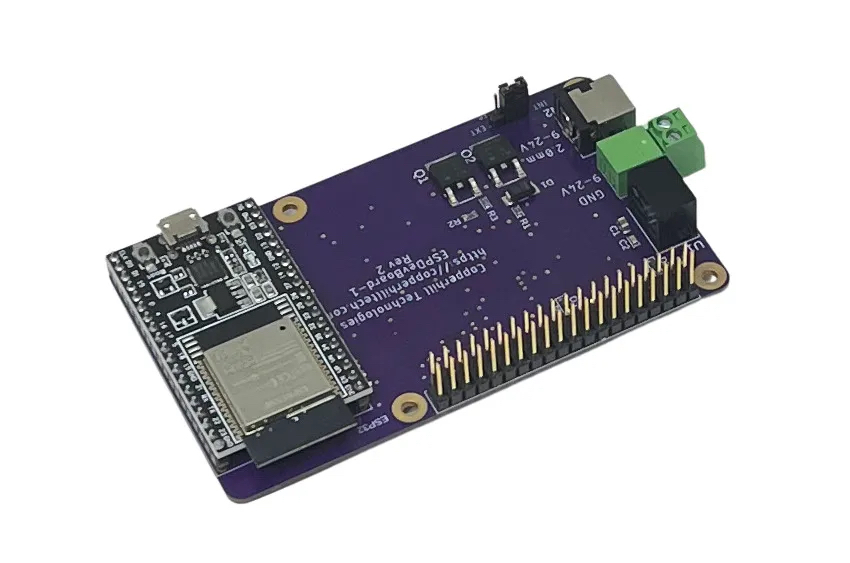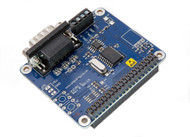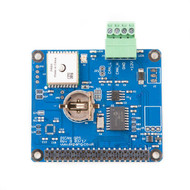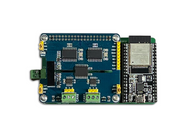- Home
- Under Development
- espBerry with PiCAN Duo CAN Bus HAT
Product Description
This product is under current development. Please contact us for more information or create an account to sign up for our newsletter. The above shown hardware configuration has been tested and released for production. Targeted list price is US$68.95 for the espBerry alone. The espBerry with PiCAN Duo CAN Bus HAT is projected to be US$135.95.
For more information on the espBerry, log on to https://espberry.com.
espBerry - ESP32 Extended Functionality through Raspberry Pi HATs
The espBerry DevBoard combines the ESP32-DevKitC development board with any Raspberry Pi HAT by connecting to the onboard RPi-compatible 40-pin GPIO header. The purpose of the espBerry should not be perceived as a Raspberry Pi alternative but as extending the ESP32’s functionality by tapping into the vast offerings of RPi HATs in the market and taking advantage of the multiple and flexible hardware options. The espBerry is the perfect solution for Internet of Things (IoT) applications, especially those requiring wireless capabilities. All open-source code samples take advantage of the popular Arduino IDE with its excellent programming capabilities.
Unleash the powerful ESP32 hardware capabilities to easily connect two CAN ports to Bluetooth, BLE, WiFi, USB, etc.
espBerry Features
- Processor: ESP32 DevKitC
- 32-Bit Xtensa dual-core @240 MHz
- WiFi IEEE 802.11 b/g/n 2.4 GHz
- Bluetooth 4.2 BR/EDR and BLE
- 520 kB SRAM (16 kB for cache)
- 448 kB ROM
- Programmable per USB A/micro-USB B cable
- Raspberry Pi Compatible 40-pin GPIO header
- 20 GPIO
- 2 x SPI
- 1 x UART
- Input Power: 5 VDC
- Reverse polarity protection
- Overvoltage Protection
- Power Barrel Connector Jack 2.00mm ID (0.079″), 5.50mm OD (0.217″)
- 12/24 VDC options available
- Operating Range: -40°C ~ 85°C
Note: Most RPi HATs operate at 0°C ~ 50°C - Dimensions: 95 mm x 56 mm – 3.75″ x 2.2″
Complies to Standard Raspberry Pi HAT Mechanical Specifications…
PiCAN2 DUO CAN Bus HAT
This PiCAN2 DUO CAN Bus HAT provides two independent CAN-Bus interfaces for the Raspberry Pi. It uses the Microchip MCP2515 CAN controller with MCP2551 CAN transceiver. Connections are made via a 4-way screw terminal. This board is also available with a 5 VDC 3A SMPS that can power the Pi as well via the screw terminal. More Information…
The information herein applies to the PiCAN2 Duo with/without SMPS (Switch Mode Power Supply).
Features
- CAN v2.0B at 1 Mb/s
- High speed SPI Interface (10 MHz)
- Standard and extended data and remote frames
- CAN connection screw terminal
- 120 Ω terminator ready
- Four fixing holes, comply with Pi Hat standard.
- Interrupt RX on GPIO25 and GPIO24
Software
We are using a modified version of the MCP_CAN Library for Arduino by Cory Fowler. The modifications were applied to match CE0, CE1, INT0, and INT1 signals. Please refer to the library information to perform functionality such as loopback, sleep, etc.
This open-source C code also works for the espBerry in combination with the following products:
- PiCAN 2 - CAN Bus Interface for Raspberry Pi...
- PICAN-M - NMEA 0183 & NMEA 2000 HAT For Raspberry Pi With SMPS...
- Dual Isolated CAN Bus HAT for Raspberry Pi...
We are currently working on the implementation of our CAN FD HATs.
More Resources
- espBerry Data Sheet (PDF)…
- PiCAN2 Duo CAN Bus HAT Schematic (PDF)…
- PiCAN2 Duo CAN Bus HAT with SMPS Schematic (PDF)…
Development Resources
Programming Support
Bluetooth & BLE Information
- Adafruit - Bluetooth & BTLE...
- Exploring Bluetooth 5 - Going the Distance...
- The Basics of Bluetooth Low Energy (BLE)...
- Understanding Bluetooth Range...
 Electronics Projects with the ESP8266 and ESP32
Electronics Projects with the ESP8266 and ESP32
Copperhill Technologies highly recommends using this book for your wireless application projects. Yes, many good books and free online resources are available these days, but this is the book we are using. It made our approach to Bluetooth, BLE, and WIFI a breeze. Programming wireless applications without hassles was fun, and we will share them on this web page.
Projects throughout the book utilize the wireless functionality and processing power of the ESP microcontrollers. Projects are built in the Arduino IDE, so you don't need to download other programming software. In addition, mobile apps are now ubiquitous, making the app build projects of the book very relevant, as are the web page design projects.
In Electronics Projects with the ESP8266 and ESP32, you'll see how easy and practical it is to access information over the internet, develop web pages, build mobile apps to remotely control devices with speech recognition, or incorporate Google Maps in a GPS route tracking app.
 Loading... Please wait...
Loading... Please wait...








